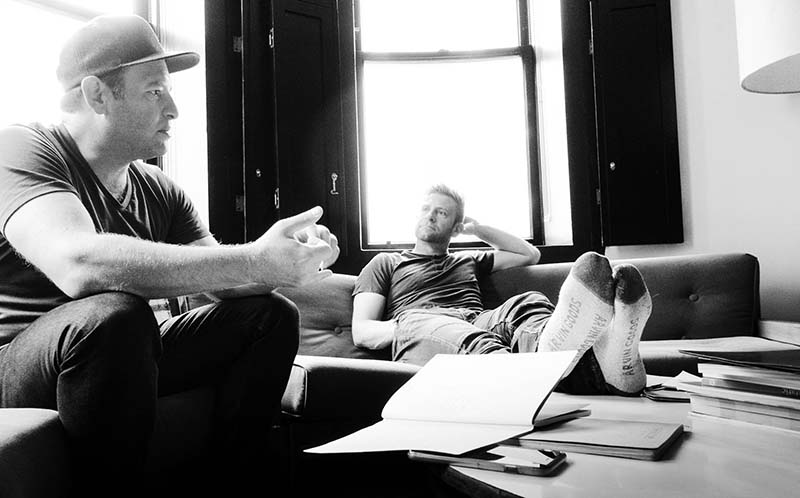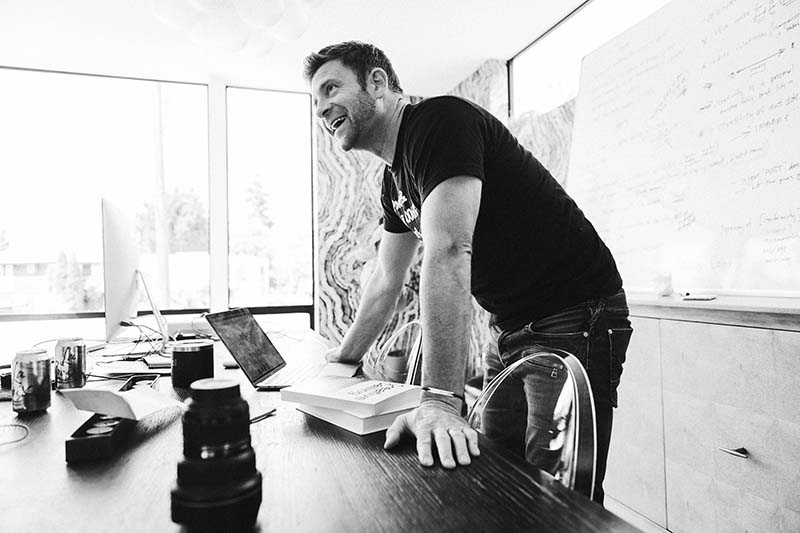Experimenting with a new format with my pal Alex Hillinger. We’re planning to do a few of these so you can hear a format where there is more banter and storytelling. A little sneak behind how the sausage is made. Let us know what you think.
A great idea is transformative by nature and what comes next either supports making it or breaking it. When a good or even great idea presents itself, it’s not enough on its own. We need certain boundaries and constraints that drive the idea forward and we probably need some luck too.
When you’re getting an idea off the ground it’s common to spend a lot of time preparing for it. I’ve had ideas where I spent way too much time in the planning stages. I call this insecurity work. My long-time friend Alex blatantly describes it as procrastination. Alex Hillinger is known as an unconventional strategist, he says there’s more to it when it comes to launching a great idea and having it work out. You need a great idea, and you need to take action on it, and you also need constraints and boundaries to do that effectively.

Collaborating with Alex Hillinger at the Ace Hotel in New York
Alex knows what he’s talking about. He works with the most innovative entrepreneurs, artists, and athletes in the world – including yours truly. Through his work, he’s pioneered new business models, grown great brands, and collaborated on projects that changed the world. He’s an advisor to Google’s Crisis Response team and CreativeLive’s executive team. His experience in helping people generate game-changing strategies and growing engaged communities lends to the conversation we have.
Listen to the Podcast
This podcast is an invitation to join us in what feels like a behind-the-scenes brainstorm at times. Ideas grow from ideas, and when we take a look at where we are and by looking closer at how we got here.
Constraints are Required
When is knowing no bounds a bad thing? When it comes to creative passion, a sense of freedom promotes a rough edge and a much-needed scrappiness. That sense of boundless freedom serves us and helps keep our work authentic and relevant. There’s a flip side to this. From a creative business perspective, we need something more tangible in the process to support and keep our pursuits in check. We need the guideposts that help our creative work align with our desired outcomes.
For the best outcomes, constraints are required. Having a framework keeps our work moving in the right direction. We can think of this in terms of deadlines, timelines, budgets, scope, deliverables, all of that. Constraints can be many things. We’ve got to ask, “What are the constraints we need to make this thing successful?”
I’ve seen these kinds of boundaries help with getting out of creative paralysis. With certain constraints in place, we’re held accountable and we’re pushed or guided when needed. When you’ve got a deadline for a client, and expected deliverables, you’re not letting procrastination stop you from your creative work. You get to it.
Alex and I talk about the constraints involved in a project I did in 2011. Dasein: An Invitation To Hang installation at the Ace Hotel NYC, was born from an earlier body of work called The Best Camera. Dasein involved a month-long artist-in-residency experience at the hotel. There were constraints in all aspects of the project, from the location and the amount of space I had to the methods I’d use for accepting photo submissions. All of the constraints involved guided how the project moved forward and even its future outcome.
Even as artists we can work with constraints. It helps to bring clarity to any blind spots and one thing that helps with this is collaboration. Having others involved in a project helps to reveal any blind spots. Collaboration can help give depth and understanding to what’s really required. In the end, setting those boundaries can be a game-changer for our creative results. This is sage advice that Alex and I talk about, there are ways for even the most freely creative people to benefit from project constraints.
90% Doing and 10% Planning
How much time planning is too much? If you’ve been following along with me, you’ve heard me refer to what I call insecurity work. This is the time we spend overthinking, preparing, and having to do the work, just so. Basically, doing everything except the actual doing.
There’s a chance that we mistakenly get trapped in a cycle of overthinking and preparing when all we need is a few boundaries and goalposts to keep us on track. Isn’t it the act of doing that really lights us up? When we’re in the moment and have that sense of urgency towards our craft, we figure things out along the way. That’s the artistic energy behind some of our best work.
We need to use that energy and blend it with the business side of things. I always talk about how it’s good to be doing 90% of the time, taking action, and then planning for the remaining 10%.
We learn a lot about this from Alex, who works with high-performing teams of designers and engineers. For him, there’s a point in the process where loose open-ended conversations are best. There is time for creative exploration and planning. Then, there’s a turning point when those kinds of conversations don’t help. Once you’ve gone into the creation and development, the focus is on the doing, and it’s time to work.
Having the framework and constraints on the front end support overall project success and are applicable to making anything.
Everything is a Remix
Hey, Gwen Stefani, I want my hat back.
I happened to be in the front row when Gwen Stefani was performing. This was in 1993. This side story is very relevant, it turns into the topic of how great artists steal and everything is a remix and that’s more than ok.
“Good artists borrow, great artists steal.” – Picasso
If you’re sitting around thinking that in order to be successful you need to create something that’s never been done before, you’re missing the point that all great creatives know. We get to take something, make it better, advance on it, and make it our own. That’s how creatives expand the world as we know it.
To do this well, we’ve got to let go of impostor syndrome. Critics will always be there, they’ll find something to pick on because that’s what they do. Their one voice is generally not a reflection of how everyone feels. We give so much attention to the negative bias and miss the fact that we’ve done something good.
The greatest risk to us and our work is that we take the critic’s view and turn it into our own self-limiting thoughts. That’s the creativity killer and it stops us from starting in the first place.
Don’t worry about what the critics will say, what we should worry about is not doing things. Overthinking, self-censorship and self-limiting behaviors will keep us stuck. Instead, we’ve got to take action over intellect to do the work, that’s where the value is.
Blind Spots

As you know, or will know now, I’m back into maker mode. In this new chapter of mine, I’m writing and exploring the difference between success and fulfillment. I believe the meaning between the two is somewhat of a blind spot for us. We see success as the ultimate goal.
I believe success is the low bar, what we should be aiming for is fulfillment.
We get to explore what’s important to us and to the people who are important to us. Here’s the thing, when we chase success alone, we don’t land at fulfillment. Rather, it’s when we chase fulfillment that we’re going to land at success.
As creatives, we dive into our pursuits and put in the hard work. In our minds, it’s all leading us towards success. When we reach our goal we get this heightened sense that it’s not what we actually wanted, it’s not all that good. When we look closer, we see It was painfully good.
We don’t see the hard things that we do day in and day out as fulfilling. They’re a means to an end. It takes seeing that blind spot so we can reframe this. Sometimes a new perspective makes all the difference in recognizing what for us is fulfilling.
Paying attention to the blind spot inevitably helps us see the meaning in the moments as we pave the way to success.When two people like Alex and I know each other well and can dive into the topics that are important to this community, we get a very tangible discussion where we go deep and in a way think out loud.
We’re all looking for that strategic edge and to understand more about the way we think as creatives. So, this talk, and what we’re doing in this style of off-the-cuff conversations invites us to come together as a community to learn and grow from each other.
We all want more happiness, joy, fulfillment, creativity, and connection. My hope is through conversations like this we not only learn what it takes to build fulfilling profitable careers but that we can tap into each other’s empathy, understanding, and mastery to do that.
FOLLOW ALEX:
instagram | website






















